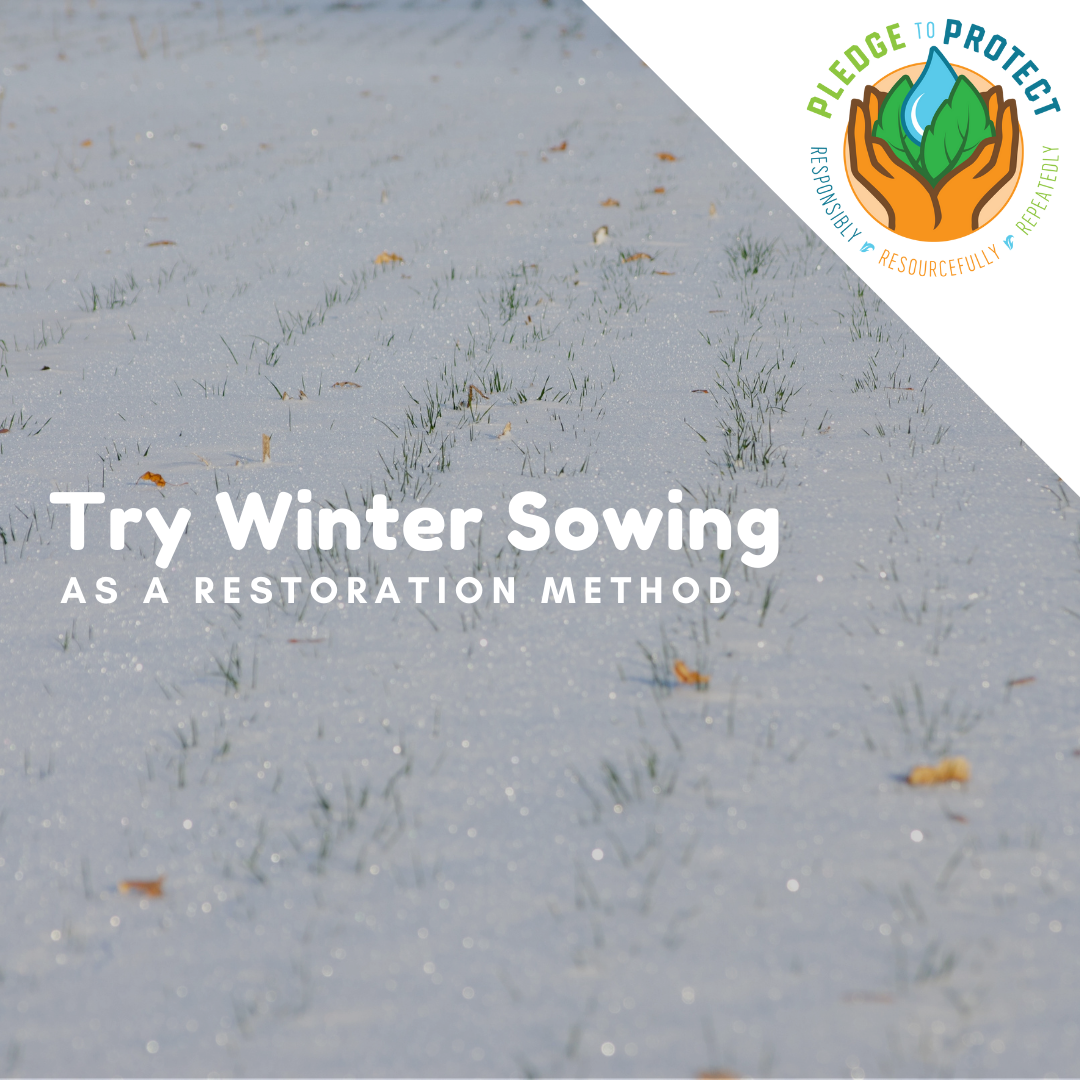This Protector’s Blog was contributed by Isaac Matlock, the Ag & Natural Resources Program Manager with the Jefferson County Cornell Cooperative Extension.
Winter is a great time to think about spring and gardening. One of the best ways you can protect your garden and surrounding natural areas from invasive species is to grow native plants. Winter sowing or frost seeding is an efficient and cost-effective method to establish native plants or enhance meadows, utilizing the natural freeze-thaw cycles of winter to integrate seeds into the soil. This technique is particularly beneficial in the Northeast United States, where winter conditions are ideal for successful frost seeding. To ensure optimal outcomes, careful planning and adherence to best practices are essential. Use the tips below to help you use winter sowing as a restoration method in your own yard or property!
Timing and Seed Selection

The timing of frost seeding is critical. Seeds should be broadcast when the ground is frozen but not covered by deep snow, typically between late winter and early spring. This ensures that seeds remain on the soil surface without being washed away. The freeze-thaw cycles create natural cracks in the soil, which help the seeds embed themselves, improving seed-to-soil contact.
Selecting an appropriate site is equally important. Frost seeding works best in areas with minimal plant competition. Invasive species must be sufficiently removed before broadcasting seed. Investing time into the proper management of invasive species before sowing seeds will contribute to the long-term success of the project. If vegetation is dense, mowing or lightly grazing the site in the fall can reduce competition and expose more soil, increasing the chances of seed germination.
Seed Selection and Preparation

Choosing the right seed mix is vital for the ecological success of the meadow. Native plant species are highly recommended as they are adapted to local conditions and support biodiversity. A mix that includes a variety of wildflowers and native grasses ensures year-round habitat value for pollinators and wildlife. Many of our native plant species require some level of stratification, meaning they require a process before germination that mimics the natural overwintering processes. This is achieved through the process of frost seeding.
Application Techniques
Broadcasting seeds by hand or using a seed spreader is the most common method for frost seeding. Ensure even distribution to prevent patchy growth. A higher seeding rate than traditional planting may be necessary to compensate for potential losses due to wind or predation.
Post Seed Management
Post-seeding management is crucial for the long-term success of frost-seeded meadows. Monitoring for invasive species and maintaining low competition during the first growing season helps native seedlings establish. Mowing to a height of 8-12 inches in the first year can prevent weeds from shading out young plants.

Use the Native Plant Finder to learn of plants native to your Zip Code or view a native plant list from the NYS DEC. Both of these resources and more are found in the Garden Protector’s Toolbox!
Did you enjoy this blog post? Take our Pledge to Protect and get monthly emails showcasing actions you can take to protect your favorite hiking trails, paddleways, forests, garden, and community from the impacts of invasive species!
Take the Pledge to Protect
The Pledge-to-Protect is a fun, positive, inviting, engaging and rewarding way to participate in invasive species prevention and management.
|
|



